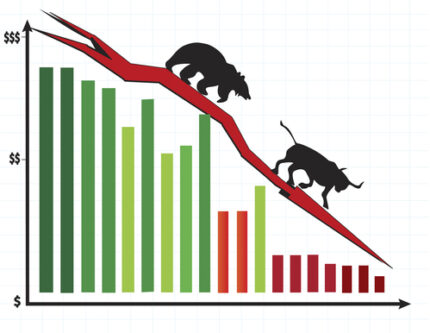I regularly host webinars for subscribers to my Dividend Hunter and Dividend Hunter Insiders services. Over recent months, I have fielded numerous questions about a coming potential market crash. I know many investors believe a crash is imminent and are scared about the values of their portfolios. I want to share my thoughts on the topic.

It is extremely difficult—in my belief, it’s impossible—to accurately time stock market peaks and troughs. It can be tough to go all cash in your portfolio and then watch stock prices continue to go higher by 10%, 15%, or 20%. Market values can go up quite a bit between now and the next big downturn.
Before I cover some portfolio strategies that will let you continue to make money and get through the next significant market decline, I want to share some market crash facts and figures.
A stock bear market occurs when the major stock market indices (Dow Jones Industrial Average, S&P 500, Nasdaq 100) decline by more than 20% from their most recent highs. A true bear market comes along an average of once a decade. We went through one in February through March of 2020.
A market correction is defined as a decline of more than 10% but less than 20%. A correction hits the market on average once every two or so years. The most recent correction before the 2020 bear market occurred in the 2018 fourth quarter.
For the long-term investor, corrections bring great opportunity. Buying shares of investments you want to own for the long-term when they are “on-sale” will provide a tremendous boost to your wealth.
An actual bear market will be scarier and more challenging to navigate. The trigger for a bear market typically comes from an outside of the stock markets, unforeseen event. Examples are the indiscriminate mortgage lending that led to the Great Financial Crisis or a virus outbreak that grew into a pandemic.
A bear market may require you to make significant changes to your investment portfolio. Some stocks may suffer long-term adverse effects. At the same time, others will become tremendously cheap in relation to their investment potential.
When going through the mental anquish that usually accompanies a deep correction or bear market, one factor to remember is that the U.S. stock market has always recovered from every decline and then even set new record highs.
Here are my recommendations to investors to make sure they are prepared for the next stock market downturn. I don’t mean for a measly 5% drop—I am talking about the major indexes falling by 15% or more.
Set aside a portion of your portfolio as “dry powder.” I define dry powder as money in a very safe investment, such as a money market fund you can use when the opportunity shows itself. I recommend my Dividend Hunter subscribers use a laddered portfolio approach using the BulletShares investment-grade bond funds, following my own example. Every month as my Dividend Hunter investments account keeps going up, I add to my BulletShares holdings. When the next correction hits the markets, I will sell some of my BulletShares holdings and use the proceeds to buy more of the most attractive Dividend Hunter high-yield investments.
Along those lines, have a portion of your portfolio in safer, dividend-paying investment sectors. These include preferred stocks, utility company shares, triple-net REITs, and other types of stocks that will not fall as far in a market crash. The safer investments will also recover more quickly and pay you attractive dividends through the ride down and back up. If you are wrong, and the market doesn’t crash, these investments will still pay attractive yields to keep your portfolio growing.





